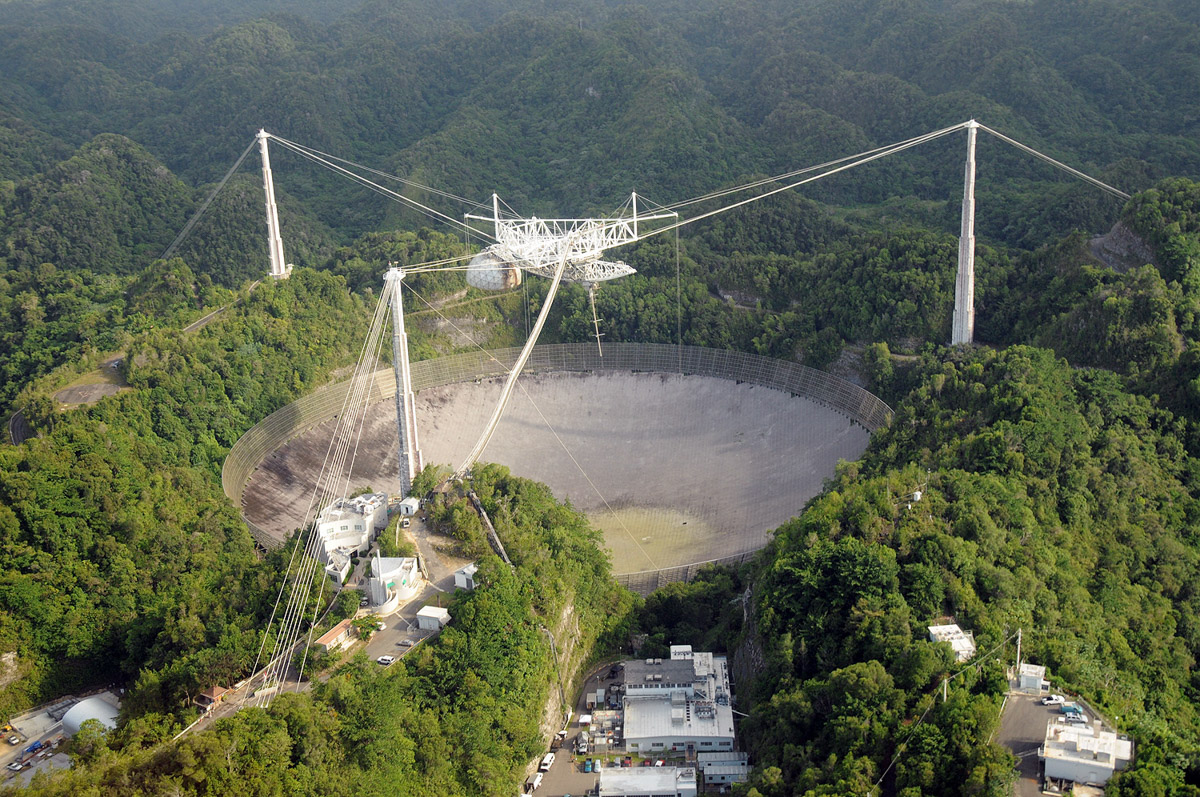After 57 years, the Arecibo Observatory's iconic telescope is shutting down
The US National Science Foundation is planning to dismantle the damaged telescope
Arecibo Observatory/UCF
Puerto Rico's Arecibo Observatory is home to one of the most powerful radio astronomy telescopes in the world. Scientists have used the observatory and telescope to make incredible discoveries, from the distribution of polar ice on Mercury (in 1994) to repeating fast radio bursts from outside our galaxy (2016). It's also a key part of science education in Puerto Rico, with more than 100,000 visitors each year.
But in August 2020, the 305-meter telescope started to have major structural issues. First, an auxiliary cable broke out of its socket, smashing into the large reflector.
Just as the observatory's team finalized testing and repair plans in early November, a main cable broke, further weakening the integrity of the structure. Now, the remaining cables, support towers, and platform are at risk of catastrophic collapse.
Today, the US National Science Foundation (NSF) announced that it plans to decommission the massive telescope. Decommissioning means that the telescope won't be repaired. Instead it will be carefully taken apart and permanently shut down.
NSF determined that it is too dangerous to attempt to repair the telescope itself because of the risk of collapse. They will, however, try to save the rest of the buildings and structures at the Arecibo Observatory, like the visitor center and LIDAR research facility.

Image courtesy of Arecibo Observatory/UCF
It's difficult to know how this loss will impact the future of radio astronomy. Prior to the damage, Arecibo was the most powerful and most sensitive planetary radar system on Earth. Astronomers used Arecibo to observe up to 130 Near-Earth Objects (comets and asteroids that are in our planet's neighborhood) each year.


















